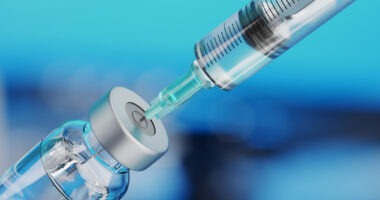The Year in Review: The Top 10 News Stories from 2023
As we begin to look back at 2023, what were the top news developments from this year from the bio/pharma industry and which impacted the industry? DCAT Value Chain Insights provides its Top 10 News Stories of 2023 in M&A, product innovation, and manufacturing.
Top news stories of 2023
Innovation uptick. This year (2023) saw a sizable uptick in new drug approvals compared to 2022, when new drug approvals were down comparative to recent years. Thus far in 2023 (as of December 1, 2023), the US Food and Drug Administration’s (FDA) Center for Drug Evaluation and Research (CDER) had approved 52 new molecular entities (NMEs) and new therapeutic biological products, compared to just 31 approvals at this time in 2022, which saw only a total of 37 new drug approvals for the full-year 2022. The 52 approvals thus far in 2023 are on par with recent years, excluding 2022, when new drug approvals were down. In 2021, 46 NMEs and new therapeutic biologics had been approved by early December en route to a total of 50 new drug approvals (NMEs and new therapeutic biological products) in the full-year 2021. A similar strong pace of new drug approvals by FDA’s CDER was seen in 2020, when 47 new drugs were approved in early December en route to a total of 53 NMEs approved for the full-year 2020. The 53 new drugs approved in 2020 represented the second highest level of approvals in the past decade, except for 2018 when 59 new drugs were approved.
Slowing growth for the US bio/pharmaceutical market. The US market for medicines, the largest national market globally, representing approximately 40% of the global market, grew by 5% in 2022, reaching a total value of $429 billion on a net price basis, according to a recent analysis by the IQVIA Institute for Human Data Science. This was driven by a range of factors, including an increase in health services utilization, which is now back to pre-pandemic levels, and the entry of new medicines into the market. Balancing these drivers of growth, was a lack of net price increases for branded drugs and patient out-of-pocket costs per retail prescription remaining under $10. Total net medicine spending is projected to remain unchanged over the next five years, reflecting structural market dynamics and competition as well as the effects of new policies and legislation. US market growth will return to pre-pandemic projections by 2024 but embeds new pressures on net growth in later years, according to the IQVIA analysis. Growth from oncology, obesity and neuroscience medicines will be significant but will be offset by declines in immunology and other areas, resulting in a compound annual growth rate of between -2% and +1% for the total market through 2027.
Changing fortunes for Pfizer. A key issue for Pfizer in 2023 has been the drop in revenues for its COVID-19 products, its COVID-19 vaccine, Comirnaty, and oral treatment for COVID-19, Paxlovid (nirmatrelvir/ritonavir), which drove a 41% operational decrease in third-quarter 2023 revenues. The decline in these products contributed to an overall revenue decline of 42% for the first nine months of 2023, which saw revenues fall from $76 billion in the first nine months of 2022 to $44 billion for the first months of 2023. Its changing fortunes lead Pfizer to launch an enterprise-wide cost realignment program earlier this year (2023) that is expected to deliver annual net cost savings of at least $3.5 billion, of which approximately $1.0 million is expected to be realized in 2023 and at least an additional $2.5 billion to be realized in 2024. Still, in its third-quarter 2023 financial results released on October 31, 2023, Pfizer reaffirmed in its full-year 2023 non-COVID operational revenue growth expectation of 6% to 8% compared to 2022 and revenues projected at $58.0 to $61.0 billion for the full-year 2023, which would keep the company as the number bio/pharma company based on revenues.
Off the charts for Lilly and Novo Nordisk. On a product basis, two companies—Eli Lilly and Company and Novo Nordisk—has seen dramatic growth thus far in 2023 for their diabetes and weight-management drugs, respectively Lilly’s Mounjaro (tirzepatide) and Novo Nordisk’s Ozempic (semaglutide) for diabetes, Wegovy (semaglutide) for weight-management, and Saxenda (liraglutide). Revenues for Lilly’s Mounjaro soared in the first nine months of 2023 to $2.96 billion from only $203 million in the year-ago period. Mounjaro launched in the US for the treatment of Type 2 diabetes in June 2022, and was approved in the US for chronic weight management in early November 2023. For Novo Nordisk, sales for the first nine month of 2023 within its Diabetes and Obesity care segment increased by 36% in Danish kroner (DKK) to DKK 153.8 billion ($22.5 billion), mainly driven by GLP-1 diabetes sales growth of 45% in Danish kroner and Obesity care growing by 167% in Danish Kroner to DKK 30.4 billion ($4.4 billion).
Novo Nordisk’s multibillion-dollar manufacturing expansions. Hand-in-hand with the product success of Novo Nordisk’s diabetes and weight-management drugs is increased demand for manufacturing capacity, and the company is advancing one of the largest manufacturing expansions announced this year (2023).
Novo Nordisk is investing DKK 16 billion ($2.3 billion) over the next four years to expand its production site in Chartres, France, for its current and future product portfolio within serious chronic diseases. The investment will increase the capacity of the manufacturing site by adding aseptic production and finished production capacity and expanding the company’s current quality-control laboratory. The investment includes capacity for glucagon-like peptide-1 (GLP-1) products. The Chartres site now employs around 1,600 people, and the production facility manufactures products to treat diabetes. Novo’s GLP-1 products include the diabetes drug, Ozempic (semaglutide).
The new facilities will more than double the footprint of the site. The facility will be designed as a multi-product facility to accommodate current and future processes. The construction project has now been initiated and will gradually be finalized from 2026 to 2028.
This is a second major investment by the company to increase production capacity for products in its chronic disease portfolio, including GLP-1 products. Last month (November 2023), the company announced an investment of more than DNK 42 billion ($6.1 billion) starting in 2023 to expand existing manufacturing facilities in Kalundborg, Denmark, for additional capacity across the value chain from manufacturing of active pharmaceutical ingredients (APIs) to packaging, with the vast majority invested in API capacity. The new API facility will be designed as a multi-product facility, with flexibility to accommodate current and future processes. The facility will have a footprint of 170,000 m2. The construction projects will be finalized gradually from the end of 2025 through 2029.
Lilly’s multi-billion dollar manufacturing expansions. Lilly also is progressing multi-billion manufacturing expansions in large measure due to growth in its diabetes product portfolio. Late last month (November 2023), the company announced plans to construct a new $2.5-billion injectable manufacturing site in Alzey, Rhineland-Palatinate, Germany. This new facility will further expand the company’s global parenteral (injectable) product and device manufacturing network and support increased demand for Lilly’s medicines, including its diabetes and obesity portfolio. Construction is scheduled to begin in 2024, and the new site is scheduled to be operational beginning in 2027.
In addition, earlier this year (April 2023), Lilly announced that it will invest an additional $1.6 billion at its two new manufacturing sites within the LEAP Innovation Park in Boone County, Indiana. Last year (May 2022), Lilly announced a $2.1-billion investment to build the two new facilities to expand Lilly’s manufacturing network for active ingredients and new therapeutic modalities, such as genetic medicines. The now combined $3.7-billion investment represents the largest manufacturing investment at a single location in the company’s history.
In March (March 2023), Lilly broke ground on a new $1-billion biotech manufacturing campus in Raheen, County Limerick, Ireland, which will be Lilly’s most advanced manufacturing site for existing monoclonal antibodies. This site will produce existing products as well as the company’s pipeline of clinical products by 2026. Additionally, the company plans to invest $500 million in Limerick to create a new biologics active ingredients site. The new $1.5-billion combined investment in Ireland is in addition to an $1-billion investment that the company announced in January 2022, for a new injectable products and devices manufacturing site in Concord, North Carolina.
Pfizer’s pending $43-billion acquisition of Seagen. Pfizer’s pending $43-billion acquisition of Seagen, a Bothell, Washington-based bio/pharmaceutical company specializing in antibody-drug conjugates (ADCs) and drugs for oncology, was one of the largest deals to date in 2023 in the bio/pharmaceutical industry. The deal, announced in March (March 2023), is expected to be completed in late 2023 or early 2024, subject to the fulfillment of customary closing conditions, including receipt of required regulatory approvals.
Seagen’s portfolio includes four approved medicines that are indicated across solid tumors and hematologic malignancies, including three ADCs: Adcetris (brentuximab vedotin), Padcev (enfortumab vedotin), and Tivdak (tisotumab vedotin). The company also commercializes Tukysa (tucatinib), which was approved earlier this year (January 2023) for treating certain types of colorectal cancer in combination with trastuzumab. Clinical development programs are ongoing for each of these medicines for potential new tumor types or expanded indications in earlier lines of therapy, with catalysts expected annually through 2027.
The proposed acquisition is expected to enable combination potential across both Seagen’s and Pfizer’s pipelines and to use Pfizer’s protein engineering and medicinal chemistry capabilities to advance Seagen’s ADC technology for potential new target combinations and new biologics. Seagen is also advancing technologies capable of potentially generating multiple investigational new drug applications, including new linker/payload technologies for ADCs and other antibody platforms that directly engage the immune system to destroy tumors, such as bi-specific antibodies.
At the time of the merger announcement in March (March 2023), Seagen said it expects to generate approximately $2.2 billion of revenue in 2023, representing 12% year-over-year growth, from its four in-line medicines, royalties, and collaboration and license agreements. When combining the expected growth trajectories for these medicines with candidates that could emerge from Seagen’s pipeline, subject to clinical trial and regulatory success, Pfizer said at the time of the merger announcement that it believes Seagen could contribute more than $10 billion in risk-adjusted revenues in 2030, with potential significant growth beyond 2030.
AbbVie’s pending $10.1-billion acquisition of Immunogen. Another deal in the antibody drug conjugate (ADC) space, is AbbVie’s pending $10.1-billion acquisition of Immunogen, a Waltham, Massachusetts-based bio/pharmaceutical company developing ADCs. The deal, announced late last month (November 2023), is expected to close in the middle of 2024, subject to ImmunoGen shareholder approval, regulatory approvals, and other customary closing conditions. ImmunoGen’s key commercial product is Elahere (mirvetuximab soravtansine-gynx), an ADC for treating platinum-resistant ovarian cancer. The acquisition accelerates AbbVie’s commercial and clinical presence in the solid tumor space. Additionally, ImmunoGen’s follow-on pipeline of ADCs further complements AbbVie’s ADC platform and existing programs.
Oncology continues to be high-growth therapeutic sector. Pfizer’s and AbbVie’s deal for oncology-focused ADC companies reflects a larger and continued trend in the bio/pharmaceutical industry: the strength of the oncology drug market. Oncology drugs, the largest therapeutic sector globally and in the US, continues to be a major driver of growth. Overall, on a global basis, spending on cancer medicines rose to $196 billion globally in 2022, growing at an average 12% annually over the last five years, according to a recent study, Global Oncology Trends 2023: Outlook to 2027, by the IQVIA Institute for Human Data Science. The growth in major markets is driven by new products and brand volume, and offset by losses of exclusivity, including biosimilar impact. Spending on oncology medicines is expected to reach $375 billion by 2027, according to the IQVIA Institute analysis. The US spending on oncology medicines has risen from $58 billion in 2018 to $88 billion in 2022 representing 45% of global spending. Growth in the US is expected to increase to the 12-15% range as more than 100 new drugs are anticipated to launch across novel modalities and frequently moving to earlier lines of therapy; increases in spending will be offset by patent expiries for small molecules and biologics, according to the IQVIA Institute’s analysis. A total of 115 oncology novel active substances (NASs) have launched globally in the past five years and 237 over the last 20 years.
Global economy slows but inflation abates. Inflationary pressures represented the number one issue in 2022, but inflation abated in 2023 although the global economy as a whole is expected to see slowing growth. Global growth is set to remain modest, with the impact of the necessary monetary policy tightening, weak trade, and lower business and consumer confidence being increasingly felt, according to the Organization for Economic Cooperation and Development’s (OECD) latest Economic Outlook, issued last month (November 2023). The OECD projects global growth in gross domestic product (GDP) of 2.9% in 2023, followed by a mild slowdown to 2.7% in 2024 and a slight improvement to 3.0% in 2025. Asia is expected to continue to account for the bulk of global growth in 2024-25, as it has in 2023. Consumer price inflation is expected to continue to ease gradually back toward central bank targets in most economies by 2025, as cost pressures moderate. Consumer price inflation in OECD countries is expected to decline from 7.0% in 2023 to 5.2% in 2024 and 3.8% in 2025.
Growth in the US is projected at 2.4% in 2023, before slowing to 1.5% in 2024, and then picking up slightly to 1.7% in 2025 as monetary policy is expected to ease. In the euro area, which had been relatively hard hit by the war in Ukraine and the energy price shock, GDP growth is projected at 0.6% in 2023, before rising to 0.9% in 2024 and 1.5% in 2025. China is expected to grow at a 5.2% rate this year (2023), before growth drops to 4.7% in 2024 and 4.2% in 2025 on the back of ongoing stresses in the real estate sector and continued high household saving rates.






